Sports
/ArcaMax
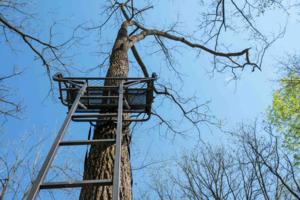
Hunter goes missing. Days later, he's found dead below tree stand, NC cops say.
A hunter who went missing a week ago south of High Rock Lake has been found dead, according to investigators in North Carolina.
The body of Jerry Eugene Sutton Jr. was discovered Dec. 16, in a wooded area about a 14-mile drive southeast from Salisbury, the Rowan County Sheriff’s Office said in a Dec. 22 news release.
It’s suspected 41-year...Read more
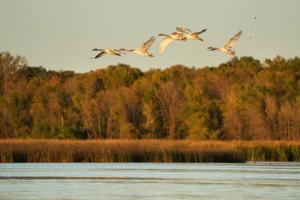
Dennis Anderson: Continuing a Minnesota conservation tradition, hunters schedule Duck Summit for March
MINNEAPOLIS — Minnesota waterfowlers will hold a Duck Summit March 27-28 in Nicollet — near the shores of venerable Swan Lake, which once was one of North America’s migratory bird meccas.
The planned gathering, long overdue, is born of the frustration of Minnesota duck hunters, who in autumn are tired of seeing mostly empty skies, but who...Read more

Hunting and cooking squirrels is in Yia Vang's blood
MINNEAPOLIS — Yia Vang whispered to his friend and squirrel hunting guide Chang Her as flakes drifted from the sky. The crunch of snow under their feet echoed through Sand Dunes State Forest, northwest of the Twin Cities.
The squirrels were hunkering down in their nests, like many other Minnesotans that day, Vang said. While the squirrels ...Read more
Best times for anglers
(Table for Dec. 28-Jan. 11)
This table lists top fishing times and days for the coming weeks. For best results, begin fishing one hour before and continue one hour after the times given. Times apply to all time zones.
———
Sunday………........6:40 p.m.......…...…….…….............................................7:05 a.m.
...Read more
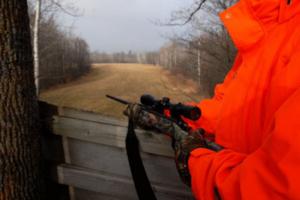
Dennis Anderson: A trigger once pulled can never be unpulled -- a lesson some hunters learn the hard way
MINNEAPOLIS — The problem with pulling a trigger is that you can’t unpull it — a lesson some hunters learn the hard way.
Excited to raise your shotgun in the direction of what you think is a snow goose, only to find out the bird you killed is a protected trumpeter swan?
Too late, once you’ve pulled the trigger.
Think that late-...Read more
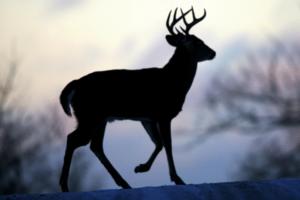
Laura Yuen: Yes, someone really sawed the head off that roadkill deer
MINNEAPOLIS — On a recent Sunday morning, Carrie Schmitz and her family were cruising to church in Golden Valley when they spotted an enormous buck lying dead in the highway median. Her three children went wild at the sight of its massive antlers, shouting dubiously that it must have been a “30-pointer.”
About an hour and a half later, at...Read more
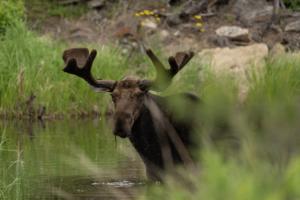
Deer hunter accused of illegally bagging moose in northeastern Minnesota
MINNEAPOLIS — A deer hunter admitted he messed up and bagged a moose, whose population is a far cry from what it was in Minnesota two decades ago, according to a criminal complaint filed last Wednesday.
Dane Landon Nelson, 37, of Duluth, was charged in St. Louis County District Court with illegally taking the moose, a gross misdemeanor, while...Read more
Best times for anglers
(Table for Dec. 21-Jan. 4)
This table lists top fishing times and days for the coming weeks. For best results, begin fishing one hour before and continue one hour after the times given. Times apply to all time zones.
———
Sunday……...........1:10 p.m...............…………….........................................1:35 a.m.
...Read more
Best times for anglers
(Table for Dec. 14-Dec. 28)
This table lists top fishing times and days for the coming weeks. For best results, begin fishing one hour before and continue one hour after the times given. Times apply to all time zones.
———
Sunday……….........7:35 a.m.....…………………..............................................7:50 p.m.
...Read more
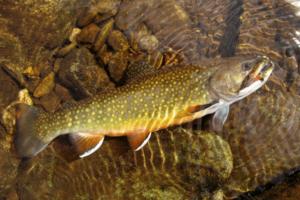
Fish species native to Connecticut getting statewide protections for first time since 1953
HARTFORD, Conn. — The brook trout, the only species of trout native to Connecticut, will soon be getting a minimum size limit to harvest for the first time in over 70 years.
Officials with the state’s Department of Energy and Environmental Protection are placing more protections on the fish after monitoring revealed a declining population. ...Read more
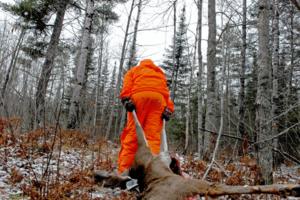
Dennis Anderson: Wolves, eagles, rodents -- gut piles left behind by successful deer hunters draw big crowds
MINNEAPOLIS — Last month, Erv Berglund leveled his scoped handgun in the direction of a whitetail buck on northern Minnesota land his dad bought in 1933.
Only scantily populated with deer, the property is about 60 miles south of the Canadian border. Aspen, spruce, birch, fir and black ash cover its higher ground, and swamp frames the rest.
...Read more

Pittsburgh fishing club offers kids free outings
PITTSBURGH — At the end of one of Angler Fishing Club's expeditions on Lake Carnegie — jaunts during which the Pittsburgh volunteer organization provides fishing equipment and lessons free of charge — a young girl realized her passion for the sport.
"I want to go fishing all the time now," she said.
"Then tell your mom or dad that you ...Read more

World-ranked archer picks up a rifle to join his family for deer season
PITTSBURGH — Behind a kaleidoscope of archery ribbons and medals at KJ's Pro Archery in Greene County, Pa., Kevin "KJ" Polish plots a massive breakfast and dinner feast for the opening of buck hunting season.
Bacon, sausage, ham, onion and peppers start sizzling at 4:30 a.m. Saturday for about a dozen people who will be hunting on his ...Read more
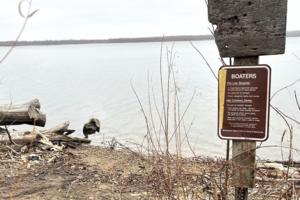
'Bud's Landing' drew duck hunters for decades with a safe harbor and 3.2 beer. Now it's giving way to canoes and kayaks.
MINNEAPOLIS — If you listened to those who knew Bud Joseph, he’d roll over in his grave about what was happening to his historic boat landing on the Mississippi River near Hastings.
Cherished by duck hunters since the 1930s as a safe place to launch their boats, the site recently won approval to be developed as a county “use area” for ...Read more
Best times for anglers
(Table for Dec. 7-Dec. 21)
This table lists top fishing times and days for the coming weeks. For best results, begin fishing one hour before and continue one hour after the times given. Times apply to all time zones.
———
Sunday……….........2:05 a.m.......…...…….……............................................2:35 p.m.
...Read more
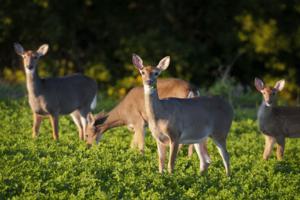
Dennis Anderson: Whitetail hunters pinched for baiting deer can lose money, licenses and guns
MINNEAPOLIS — If you’re a farmer, cutting corn is a prelude to taking the crop to market and selling it for cash.
But if you’re a hunter and you cut corn in a way that helps you kill a deer, or might help you kill a deer, the practice doesn’t pay.
It costs.
A lot.
Welcome to modern deer baiting, an illegal practice as old as the ...Read more
Dennis Anderson: Hunter's 'selfless act' of saving a friend's dog was his last
MINNEAPOLIS — In the end, after the dive team had recovered Chris Hendricks’ body from a frigid North Dakota slough, and after word of Chris’ death reached his family and friends, no one who knew him was surprised that he had stripped off his hunting clothes and splashed into the wetland to save a friend’s dog.
A high school soccer ...Read more
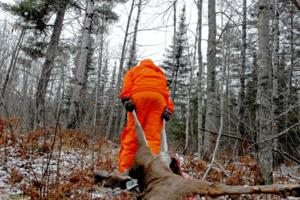
Hunting success improved over the heart of Minnesota's deer season
MINNEAPOLIS — Minnesota’s peak deer season ended last Sunday with a plentiful harvest that assured state wildlife biologists that whitetail populations are still rebounding and being kept in check by hunters.
The final tally for the nine-day, statewide firearms season was 123,634 whitetails, up 8% from a year ago and comfortably ahead of ...Read more
Best times for anglers
(Table for Nov. 30-Dec. 14)
This table lists top fishing times and days for the coming weeks. For best results, begin fishing one hour before and continue one hour after the times given. Times apply to all time zones.
———
Sunday……............7:55 p.m...............……………........................................8:25 a.m.
...Read more

A deer-baiting bust, angling tips, seized ammo: Rolling with a Minnesota conservation officer
WACONIA, Minn. – As light drained from the sky, conservation officer Alexander Birdsall bumped along in his Silverado 2500, crisscrossing isolated farm fields and patrolling for trouble.
His focus west of town was “outlaw area,” as he called it. This time of year, shining deer and shooting from this stretch of gravel are common offenses, ...Read more
Popular Stories
- Dennis Anderson: Continuing a Minnesota conservation tradition, hunters schedule Duck Summit for March
- Hunter goes missing. Days later, he's found dead below tree stand, NC cops say.
- Hunting and cooking squirrels is in Yia Vang's blood
- Best times for anglers
- Dennis Anderson: A trigger once pulled can never be unpulled -- a lesson some hunters learn the hard way





